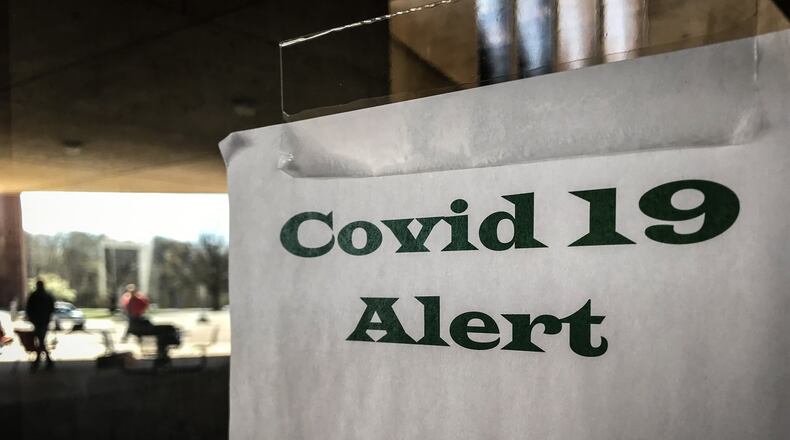“We’re no longer asking for the leanest budget for each division,” he said. “We’re asking for a budget of life support.”
CORONAVIRUS: Complete Coverage
Wright State is not alone in these challenges. This week, the University of Dayton said it will furlough about 450 employees and lay off an additional 60 employees this summer.
Wright State trustee Marty Grunder said he expects the board of trustees to discuss the situation further Friday.
“It’s not pleasant,” he said. “But there’s no sense in kicking the can down the road.”
Sample also insisted that it is possible for Wright State to build a “business model” around a smaller student body, if it comes to that.
“That’s a challenge,” Sample added after questioning from university trustee Bruce Langos. “It’s not something to be scared of.”
Trustees heard a range of annual budget deficit projections Thursday, from $11 million to nearly $50 million, with the latter projection tied to enrollment falling to 10,000 students — or lower. Wright State has more than 11,000 students today.
However, while Sample emphasized that all projections are fluid — at one point he called them a “living document” — he maintained that a deficit of some size should be expected.
After the meeting, in an email to the Dayton Daily News, Sample stressed that he is not projecting a certain deficit of $50 million, nor is he projecting enrollment to fall to 10,000.
“As we look at FY (fiscal year) ‘21, we are simply modeling,” Sample said in the email. “We are not projecting a $50 million deficit in any way. We are simply showing the impact of not making any adjustments. We make adjustments every year through the budget process.”
He added: “Our enrollment projections are not currently trending to 10K. The story here is the strategic effort of aligning the university with the marketplace over a multi-year period.”
Trustees were also told the university could see about $10.1 million from federal CARES Act funding, split in two roughly equal amounts, targeted to help students and address the university’s own expenses.
Steven Sherbet, Wright State bursar, said he expects to be able to start drawing funds from the government in about two weeks.
RELATED: Honda extends suspension of auto assembly until May 8
Like other universities, Wright State finds itself in a dramatically new environment as a result of the pandemic, which has closed in-person instruction on campuses across the nation and forced millions in refunds for housing and other student expenses.
Sherbet said about $5 million is due to students who are eligible for Title IV financial aid funding, to help them with food, housing, health care, child care and other expenses.
Sample said university leaders should proceed carefully in choosing how to spend CARES funds. He also cautioned that the state could cut Wright State’s funding by its CARES allocation.
MORE: UD to lay off or furlough more than 500 employees
WSU is not allowed to use CARES funds to cover any outstanding charges students may have, Sherbet said.
Refunds or credits due to students exceed $3 million and summer enrollment has been hit, resulting in a “decrease of 17 percent” for summer enrollment, the university said in a campus-wide email in mid-April.
The university’s portion of CARES funding can reimburse the university for software and licensing fees, as well as computers and IT capacity for remote learning.
WSU President Susan Edwards, with the university provost, vice presidents, vice provosts and deans have “voluntarily agreed to take a 20 percent reduction in salary,” Wright State said in mid-April.
The $2 trillion Coronavirus Aid, Relief, and Economic Security (CARES) Act was passed by Congress and signed by President Trump in March.
About the Author

